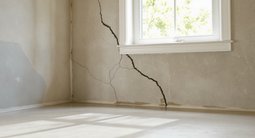TL;DR
Selling next year? The best way to maximize the spring market is to begin today with a clear pre-listing checklist for spring market tasks. Focus on low-cost, high-impact upgrades, smart staging, and early agent advice to prepare your home to sell in 2026 without last-minute panic.
Why early prep wins in a crowded real estate market

Early curb appeal with fresh paint and spring blooms creates a welcoming first impression for buyers.
Selling in 2026? Start pre-listing prep now to beat the spring market with smart updates, staging, and a timeline that reduces stress.
Here’s the thing about home selling in a shifting real estate market: options favor buyers. When inventory rises, the homes that sell first are the ones that look crisp, feel move-in ready, and are priced with precision. That’s why experts advise starting several months ahead with a simple, staged plan that puts curb appeal, repairs, and photos on your side.
If you want to sell your home next spring, begin today. Early prep lets you book contractors at fair prices, spread costs over time, and make thoughtful decisions instead of rushed ones. A seasoned agent can help you prioritize what matters in your zip code so you invest where it pays off and skip what won’t move the needle.
Your pre-listing timeline: when to start preparing to sell a house
Begin 6–9 months before your target list date so you can fix, stage, and photograph without rushing. Agents often advise mapping a month-by-month plan: declutter, repair, paint, then stage and photograph before peak spring demand.
- 6–9 months out: Interview agents, define your list window, and request a room-by-room punch list. Book pros early; good contractors can have 4–12 week lead times.
- 5–6 months out: Declutter by removing 30–40% of visible items. Pack seasonal gear. Donate duplicates. Aim for floors and surfaces to read “open” at first glance.
- 3–4 months out: Complete repairs: dripping faucets, loose rails, squeaky doors, cracked caulk, stained grout. Replace yellowed switch plates and dated thermostats.
- 2–3 months out: Paint in light, neutral tones (LRV 60–70 is a reliable target). Update lighting to 2700–3000K warm LEDs for a cohesive glow in photos and showings.
- 6–8 weeks out: Tackle curb appeal: fresh mulch at 2–3 inches, prune shrubs below window sills, pressure-wash paths, and repaint the front door. Simple landscaping can transform first impressions.
- 4–6 weeks out: Consider a pre-listing inspection to surface surprises on your terms. Address safety and moisture issues first; they’re the biggest contract killers.
- 2–3 weeks out: Final staging and deep clean. Schedule listing photos on a bright day. Twilight exteriors can boost click-through on portals.
User insight: Sellers who time photography before early spring often capture better light, less competition, and more online attention in the first 72 hours.
Anecdote
A downsizing seller I met thought they needed a kitchen gut. Instead, they painted, swapped the faucet, added brighter bulbs, and staged a bistro table. Feedback shifted from “small kitchen” to “cozy and bright,” and the home sold above ask after five days. The takeaway: it’s rarely about perfection; it’s about clarity and light.
What to fix and refresh: best home improvements before listing
Prioritize small, high-ROI refreshes that make buyers feel the home is move-in ready. Designers often advise focusing on first impressions, surfaces, and scent; the goal is to remove doubts and add daylight.
- Paint smart: A whole-house refresh in soft, neutral paint unifies spaces and photographs beautifully. Choose satin/eggshell for walls; semi-gloss for trim.
- Hardware swaps: New cabinet pulls and door levers offer a fast style lift. Aim for one consistent metal per zone to avoid visual noise.
- Lighting upgrades: Replace dim fixtures and mismatched bulbs. 2700–3000K LEDs, 800–1100 lumens in living spaces, and layered light (overhead + lamps) flatter photos.
- Kitchen tune-up: Re-caulk sinks, touch up cabinet paint, replace a tired faucet, and add an inexpensive, modern backsplash if your comps demand it.
- Bath refresh: New shower head, fresh grout, clean glass, and a light hotel-white towel set. Replace worn silicone and add a framed mirror if medicine cabinets look dated.
- Flooring fixes: Refinish scratched hardwoods or deep-clean carpets. If replacing, continuous LVP in a warm tone creates a larger, cohesive feel.
- Energy and maintenance: Service HVAC, replace filters, clean gutters, and test GFCIs. A neat mechanical closet signals a cared-for home.
Curb appeal check: Edge beds, add 2–3 large planters by the entry, and ensure house numbers and the mailbox are spotless. Smell matters too; avoid heavy fragrances and lean on fresh air.
Pro tips and tools sellers swear by
Small choices stack into big results when you align updates with your local comps and buyer expectations. Think strategically, spend surgically, and let data guide you.
- Price proof with comps: Ask your agent for three sold, three active, and three pending comps. Calibrate features, condition, and days on market before you swing a hammer.
- Stage to the lens: Photograph from doorway sight lines; float sofas off walls; anchor with an 8x10 or 9x12 rug in most living rooms. Buyers shop photos first.
- Light the path: On show days, open blinds to 90%, switch every light on, and set thermostats to comfortable ranges. Comfort keeps buyers touring longer.
- Budget guardrails: Many agents suggest investing 1–3% of expected sale price in prep, weighted toward paint, floors, lighting, and landscaping.
- Leverage virtual design: Use ReimagineHome to test paint colors, furniture layouts, and listing-photo enhancements before you spend. Virtual staging can clarify scale without renting furniture.
Image suggestions (for your marketing package):
- Suggested alt text: “Bright, neutral living room staged with light rug and warm LED lighting.” Caption: Neutral paint and layered lighting make spaces feel larger and calmer.
- Suggested alt text: “Freshly painted front door with planters and clear house numbers.” Caption: Simple curb appeal updates boost first impressions in seconds.
- Suggested alt text: “Decluttered kitchen with updated faucet and cabinet hardware.” Caption: Small hardware swaps read as a full refresh in photos.
Reflection: I’ve seen clean, consistent finishes and great light outrank trendy upgrades. Buyers forgive style; they rarely forgive neglect.
Anecdotes and real stories from recent sellers
Real sellers prove that early, focused prep outperforms frantic makeovers every time. Start sooner, choose fewer, smarter moves, and let the market meet you.
- The floating month: A family planned to list in April but began in October. By January their punch list was done; they listed two weeks earlier than competitors and received two offers in the first weekend.
- The front-door fix: One seller delayed repainting the entry for years. A $75 quart of paint and new numbers delivered a noticeable bump in showing feedback about “welcoming curb appeal.”
- The bath tune-up: A couple skipped a full remodel and instead re-grouted, swapped a vanity top, and installed a better mirror. The bathroom went from “dated” to “clean” in feedback, and days on market halved compared with nearby comps.
- The early inspection: Another seller ordered a pre-listing inspection 60 days out. They handled two minor electrical issues in advance, avoiding a contract re-negotiation and keeping closing on schedule.
Visualization Scenario
Picture a clean, sunlit entry with a freshly painted door, crisp numbers, and planters framing the threshold. Inside, sight lines are clear: a neutral living room with a right-sized rug, a simple art trio above the sofa, and warm lamps glowing at 3000K. Every detail whispers, “Move-in ready,” and your listing photos tell the same story online.
FAQ: quick answers for sellers prepping now
- How should I prepare my home to sell in 2026?
Focus on a pre-listing checklist for spring market: declutter 30–40%, complete repairs, paint neutrals, refresh lighting, and stage for photos. - When is the best time to start preparing to sell a house?
Most agents recommend starting 6–9 months before your target list date to secure contractors, spread costs, and avoid rushed decisions. - What are the best home improvements before listing?
High-impact, low-cost updates include interior paint, lighting upgrades, curb appeal, minor bath and kitchen tune-ups, and flooring refreshes. - Should I get a pre-listing home inspection?
A pre-listing inspection 4–8 weeks before listing can surface issues early, helping you fix deal-breakers and reduce renegotiation risk. - How do you price a home for the spring market?
Price against three sold, three active, and three pending comps, adjusting for condition and upgrades; then test buyer response in the first week.
Make 2026 your clean, confident sale
Start now, sell smooth later. If 2026 is your target, the winning formula is simple: plan 6–9 months ahead, prioritize visible value (paint, light, floors, curb appeal), and lean on an agent who knows which upgrades your buyers actually expect. The result is a calmer process, stronger photos, and a listing that earns attention on day one.
Want to preview style options without a big spend? Test layouts, palettes, and virtual staging with ReimagineHome, then bring your short list to your agent and contractors. Smart prep today is tomorrow’s clean contract.
- Tags: home selling, pre-listing prep, curb appeal, home staging, how to prepare your home to sell in 2026, best home improvements before listing, spring market, real estate agents
.svg)

.svg)














.png)